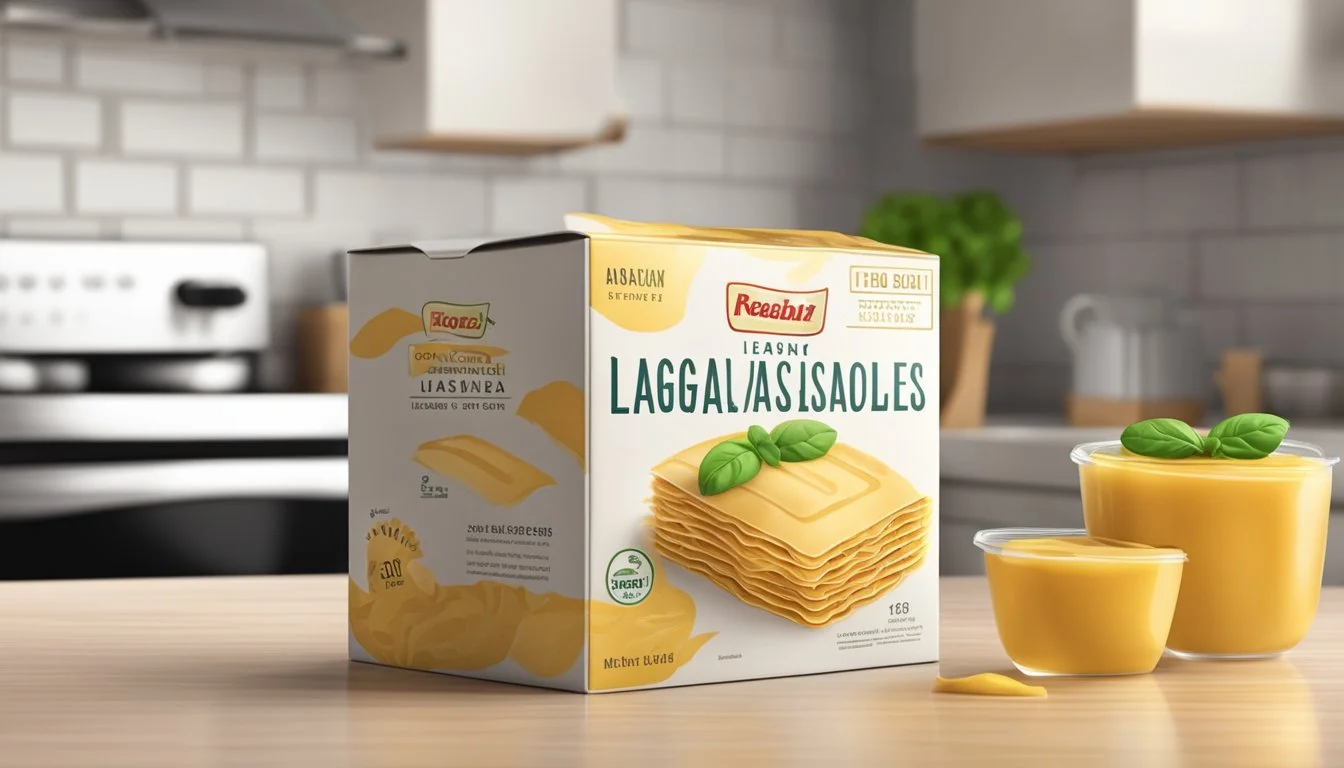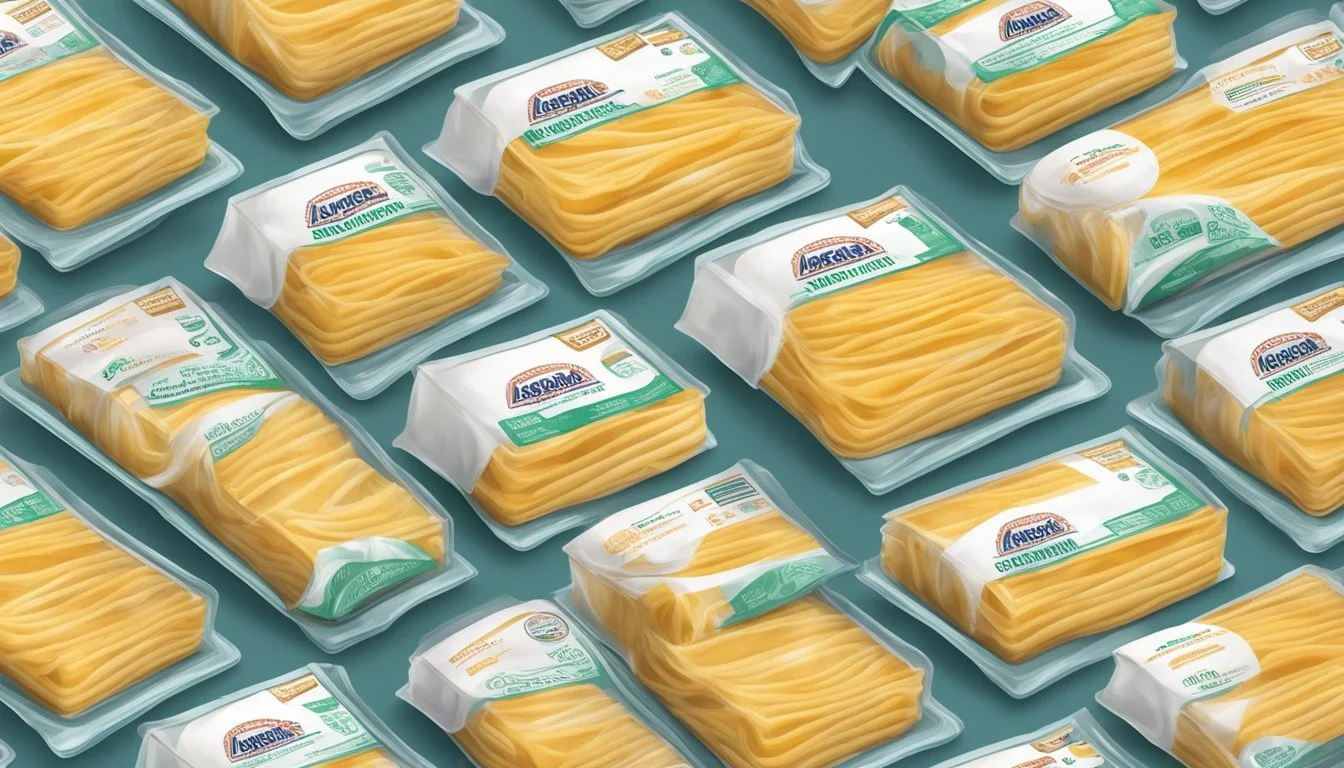Do Lasagna Noodles Expire?
Understanding Shelf Life and Storage Tips
Dry lasagna noodles can last up to three years if stored properly. The longevity of these noodles primarily depends on storage conditions. They should be kept in a cool, dry place, and unopened packages typically fare better.
Once opened, the shelf life of lasagna noodles decreases. It's advisable to transfer them to airtight containers to preserve their quality. Noodles exposed to moisture or air will degrade faster, impacting both texture and taste.
For those with cooked lasagna noodles, refrigeration is key. Properly stored in airtight containers, cooked noodles can last for about 3 to 5 days. Whether dried or cooked, understanding the storage requirements helps in making the most out of your lasagna noodles.
Understanding Food Expiration
Food expiration dates play a critical role in maintaining food safety and ensuring optimal quality. This section will discuss how expiration dates relate to food safety and the typical shelf life of dry goods.
Expiration Dates and Food Safety
Expiration dates serve as indicators for the time frame during which a food product is expected to maintain its best quality.
For lasagna noodles, the expiration date is a guideline provided by the manufacturer. While dry pasta often lasts beyond its printed date, it is crucial to check for signs of spoilage such as discoloration, an unusual smell, or mold before consumption.
Ignoring expiration dates can lead to potential health risks like food poisoning. Always storing food in proper conditions, such as a cool, dry place in tightly sealed packaging, helps extend its usability.
Shelf Life of Dry Goods
Dry goods, including lasagna noodles, generally have a long shelf life. Unlike perishable items, dry pasta can last significantly longer when kept in optimal storage conditions. For example, pasta can remain viable for months or even years if stored correctly.
Ensure that lasagna noodles are stored in airtight containers or their original packaging, away from moisture. Proper storage maintains the quality and safety of the noodles, reducing the risk of food safety issues.
Cooked lasagna noodles, however, have a much shorter shelf life. They should be stored in the refrigerator and consumed within 3 to 5 days to avoid health risks. Refrigeration in airtight containers or resealable plastic bags helps retain their quality and safety.
Lasagna Noodles Specifics
Lasagna noodles come in various types with differing shelf life spans, and recognizing when they are expired can prevent food safety issues.
Different Types of Lasagna Noodles
Dry Lasagna Noodles: These are the most common and have a long shelf life. When unopened, they can last up to 3 years if stored in a cool, dry place. Once opened, they should be kept in an airtight container to maintain quality.
Fresh Lasagna Noodles: These need to be refrigerated and consumed within a few days. They can be stored in airtight containers in the refrigerator for 2-3 days, or frozen for up to 3 months.
Oven-Ready Lasagna Noodles: These do not need pre-cooking and share a similar shelf life to dry lasagna noodles if kept unopened. Proper storage is crucial to maintain their usability.
Frozen Lasagna Noodles: Uncooked lasagna noodles can be frozen and should be thawed before use. They generally last up to 6 months in the freezer.
Signs of Expired Lasagna Noodles
Visual Changes: Expired noodles may show discoloration or signs of mold. Dry noodles can become brittle and break easily if they have surpassed their shelf life.
Texture and Smell: Fresh noodles may develop an off odor or slimy texture when expired. Dry noodles may lose their rigidity and become soft or mushy when cooked.
Packaging Condition: Damaged or punctured packaging can accelerate spoilage. Always ensure unopened noodles are in intact packaging, and opened noodles are stored properly.
Expiration Dates: Check the manufacturer’s expiration date on the packaging. Even dry noodles can deteriorate past this date, affecting both taste and safety.
Proper Storage Techniques
Proper storage of lasagna noodles ensures they remain fresh and reduce the risk of spoilage. Unopened packages should be stored differently than opened ones, and refrigeration or freezing can extend their shelf life further.
Storing Unopened and Opened Noodles
Unopened noodles should be kept in their original packaging and stored in a cool, dry location, such as a pantry or cupboard. This helps to prevent exposure to moisture and air, which can affect the quality of the noodles.
For opened packages, transfer the noodles to an airtight container to maintain their freshness. This prevents the noodles from absorbing moisture and odors from the surroundings. Store these containers in a cool, dry place at room temperature.
By following these simple storage guidelines, the shelf life of lasagna noodles can be maximized, maintaining their quality and ensuring they are ready for use whenever needed.
Utilizing Refrigeration and Freezing
Refrigeration is advisable for fresh lasagna noodles. Place them in an airtight container to maintain moisture levels, and store them in the refrigerator for up to 2-3 days.
Freezing lasagna noodles is another effective method. Uncooked noodles should be placed in airtight freezer bags and can be stored in the freezer for up to 6 months. Make sure to thaw frozen noodles before cooking to ensure even cooking.
Fresh noodles can also be frozen but these should be used within 3 months for optimal taste and texture. Maintaining proper storage conditions—whether at room temperature, refrigerated, or frozen—ensures that lasagna noodles last longer and remain of high quality.
Quality Indicators and Degradation
Dry lasagna noodles, while having a long shelf life, still undergo quality changes over time. Recognizing signs of degradation ensures you use only the best ingredients in your cooking.
Assessing Texture and Flavor
Quality lasagna noodles maintain a firm texture and consistent shape. Over time, dry noodles may become brittle and break easily, indicating texture changes.
Upon cooking, freshly expired noodles might exhibit a mushy or uneven texture. This is a key indicator that the noodles have absorbed too much moisture.
While the flavor should remain subtle, noodles past their peak might develop a stale or off taste. Fresh noodles should enhance the dish without contributing an unpleasant flavor.
Detecting Mold and Discoloration
Mold growth is a clear sign of expired lasagna noodles. Inspect noodles for any green, black, or white spots. These discolorations signal mold and unsafe consumption.
The noodles should maintain a consistent pale color. Yellowing or other color changes suggest the noodles have started to degrade.
Unpleasant odors are another red flag. Fresh noodles should not have any detectable smell. If there is a sour or musty odor, it indicates spoilage and the noodles should be discarded.
Cooking and Consumption
Lasagna noodles, whether dried or fresh, play a key role in the preparation of a variety of dishes. The quality and safety of the noodles are crucial to ensure a delicious and enjoyable meal.
Using Lasagna Noodles in Recipes
Lasagna noodles can be utilized in a range of recipes, including classic lasagna, soups, and casseroles. Dried noodles should be boiled until al dente before layering in a lasagna. Fresh noodles, typically refrigerated, can be used directly in recipes or briefly blanched for a softer texture.
Unused or leftover lasagna noodles can enhance soups and stews. Adding them to these dishes offers a hearty texture. When repurposing cooked noodles, it’s essential to ensure they haven’t gone stale or become overly soft. Best quality noodles deliver the finest results in any recipe.
Evaluating Food Quality Pre-Cooking
Food quality inspection is a fundamental step before cooking lasagna noodles. Check dried noodles for any signs of spoilage such as discoloration, off smell, or visible mold. Stored improperly or past best by dates, they may lose quality, impacting dishes like pasta or casseroles.
Fresh noodles should be checked for freshness. They should be firm, not slimy, and free from any sour odor. If stored correctly in the refrigerator or freezer, they remain safe to eat within their specified storage periods. Always discard noodles that appear spoiled or questionable to avoid foodborne illnesses.
Properly evaluating the quality of noodles beforehand ensures the best results in any pasta dish.
Advanced Considerations
Lasagna noodles, like other dry pasta, are sensitive to environmental factors and storage techniques. For both homemade and store-bought varieties, proper storage can greatly affect the shelf life and quality.
Lasting Effects of Light and Air Exposure
Exposure to light and air can significantly impact the longevity and quality of lasagna noodles. Dry pasta stored in an airtight container minimizes exposure to these elements, preventing it from deteriorating prematurely. When light and air come into contact with the noodles, it can lead to dehydration and staleness. Manufacturers typically recommend keeping noodles in a cool, dry place to avoid these risks.
In addition, poor storage conditions can cause lasagna noodles to become brittle or indicate spoilage through discoloration. It’s also crucial to guard against humidity which can lead to moldy noodles and potential foodborne illness. Sealing leftover lasagna noodles properly facilitates extended storage, whether they are cooked or uncooked, reducing the risk of harmful bacteria growth.
Impact of Homemade vs. Store-Bought
Homemade lasagna noodles tend to have a shorter shelf life compared to commercial, store-bought dry noodles. This is due to the lack of preservatives in homemade varieties. Fresh pasta, including lasagna noodles, typically needs refrigeration and should be used within a few days if not frozen. Thaw frozen homemade noodles thoroughly before use, and store them in airtight containers to preserve quality.
Store-bought dry lasagna noodles can last for 1-2 years if stored properly. The expiration dates on commercial packages offer a best-by date which guides home cooks about peak quality periods. Store dry pasta away from light and heat sources to avoid compromised quality. Cooked pasta, whether homemade or store-bought, should be kept refrigerated and consumed within about 3 to 5 days. This prevents the proliferation of harmful bacteria and ensures safety.






